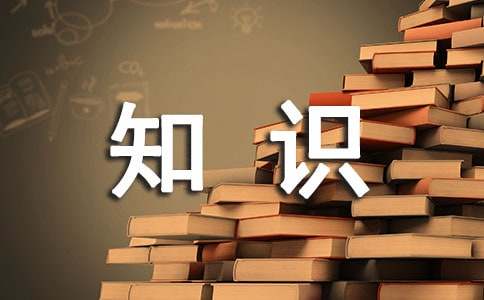小升初英語的十個知識點
一、a number of ,the number of

a number of 意思是“許多”,相當于a lot of ; the number of意思是“……的數目,……的數量”,當它作主語時,謂語動詞用單數形式。
A number of students like playing computer games.
許多學生喜歡玩電腦游戲。
The number of the students is about 1500 in our school.
我們學校學生的人數大約是1500。
二、基數詞變序數詞助記歌
基變序,有規律,末尾加上th;一、二、三特殊記,八加h ,九去e ,ve要用f替;以e結尾變ie,后跟th莫忘記。要想表示幾十幾,只變個位就可以。
特殊變化:one—first ,two—second ,three—third ,five—fifth ,nine—ninth ,twelve—twelfth ,forty—fortieth ,eight-nine—eighty-ninth
三、概數(略數)表達法
數詞+hundred/thousand/million/billion+名詞復數
hundreds/thousands/millions/billions of+名詞復數
例1
1. __people go swimming in summer in Dalian.
A、Thousands B、Thousand of C、Thousands of D、Thousand
2. __the students will take part in this English speech contest.
A. Two hundred of B. Two hundreds of C. Hundreds of D. Hundred of
四、of sb.與for sb.的區別
(1)of sb.“對于(某人)”,用于It is +adj. +of sb. to do sth.句型中,形容詞為clever, kind, nice等描述人物性格特征的詞,of后的人物與形容詞有主表關系.
(2)for sb.“對于(某人)”,用于It is +adj. +for sb. to do sth.句型中, 形容詞為easy, important等不描述人物性格特征的詞,for后的人物與形容詞沒有主表關系。
五、不能同時出現在一個句子中的連詞
1、because(因為),so(所以)不能同時出現在一個句子里,只能用其一。
Because he was tired, he couldn’t walk there.
=He was tired ,so he couldn’t walk there.
因為他累了,所以他不能走到那兒了。
2、(al)thouthg(雖然),but (但是)不能同時出現在一個句子里,只能用其一。但thouthg和yet可以同時出現在一個句子里(yet用作副詞)
Thought he was tired, he still worked hard.
=He was tired, but he still worked hard.
雖然他很累,但他仍然努力工作。
六、副詞的比較級
1、形容詞與副詞的區別 (有be用形,有形用be;有動用副,有副用動)
⑴在句子中形容詞一般處于名詞之前或be動詞之后
⑵副詞在句子中最常見的是處于實義動詞之后
2、副詞比較級的變化規則基本與形容詞比較級相同 (不規則變化:well-better, far-farther)
七、形容詞的比較級
1、形容詞比較級在句子中的運用:兩個事物或人的比較用比較級,比較級后面一般帶有單詞than。比較級前面可以用more, a little 來修飾表示程度。than后的人稱代詞用主格(口語中可用賓格)。
2、形容詞加er的規則:
⑴一般在詞尾加er ;
⑵以字母e 結尾,加r ;
⑶以一個元音字母和一個輔音字母結尾,應雙寫末尾的輔音字母,再加er ;
⑷以“輔音字母+y”結尾,先把y變i,再加er 。
3、不規則形容詞比較級:
good-better, beautiful-more beautiful
八、There be 句型與have, has的區別
1、There be 句型表示:在某地有某物(或人)
2、在there be 句型中,主語是單數,be 動詞用is ; 主語是復數,be 動詞用are ; 如有幾件物品,be 動詞根據最靠近be 動詞的那個名詞決定。
3、there be 句型的否定句在be 動詞后加not , 一般疑問句把be 動詞調到句首。
4、there be句型與have(has) 的區別:there be 表示在某地有某物(或人);have(has) 表示某人擁有某物。
5、some 和any 在there be 句型中的運用:some 用于肯定句, any 用于否定句或疑問句。
6、and 和or 在there be句型中的運用:and 用于肯定句, or 用于否定句或疑問句。
7、針對數量提問的特殊疑問句的基本結構是:
How many + 名詞復數 + are there + 介詞短語?
How much + 不可數名詞 + is there + 介詞短語?
8、針對主語提問的特殊疑問句的基本結構是:
What’s + 介詞短語?
九、一般過去時
1、一般過去時表示過去某個時間發生的動作或存在的狀態,常和表示過去的時間狀語連用。一般過去時也表示過去經常或反復發生的動作感謝。
2、Be動詞在一般過去時中的變化:
⑴am 和is在一般過去時中變為was。(was not=wasn’t)
⑵are在一般過去時中變為were。(were not=weren’t)
⑶帶有was或were的句子,其否定、疑問的變化和is, am, are一樣,即否定句在was或were后加not,一般疑問句把was或were調到句首。
3、句中沒有be動詞的一般過去時的句子
否定句:didn’t +動詞原形,如:Jim didn’t go home yesterday.
一般疑問句:在句首加did,句子中的動詞過去式變回原形。
如:Did Jim go home yesterday?
特殊疑問句:⑴疑問詞+did+主語+動詞原形?
如: What did Jim do yesterday?
⑵疑問詞當主語時:疑問詞+動詞過去式?
如:Who went to home yesterday?
十、動詞過去式變化規則
1、一般在動詞末尾加-ed,如:pull-pulled, cook-cooked
2、結尾是e加d,如:taste-tasted
3、末尾只有一個元音字母和一個輔音字母的重讀閉音節,應雙寫末尾的輔音字母,再加-ed,如:stop-stopped
4、以“輔音字母+y”結尾的,變y為i, 再加-ed,如:study-studie
【小升初英語的十個知識點】相關文章:
2016小升初英語的十個常考知識點01-23
2017小升初英語語法十個常考知識點08-30
小升初英語必備知識點02-12
小升初英語語法知識點匯總10-03
小升初英語語法易錯知識點07-20
2017小升初英語重要知識點02-22
小升初英語必背10個知識點05-08
小升初英語名詞類與動詞類知識點02-12
小升初英語必考10個知識點總結09-07
2017小升初英語必考知識點02-23